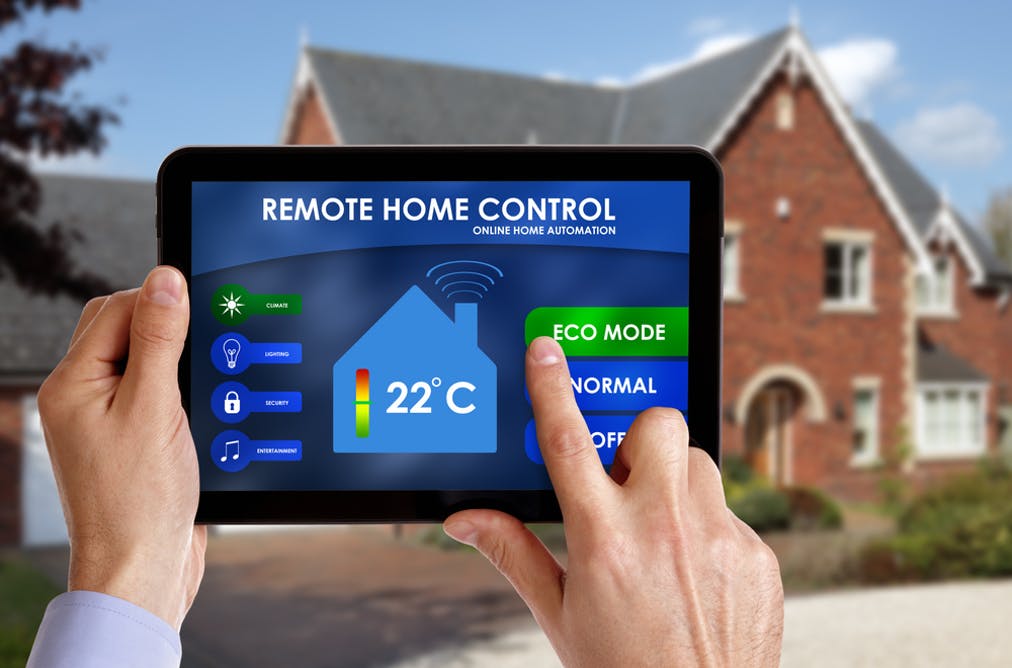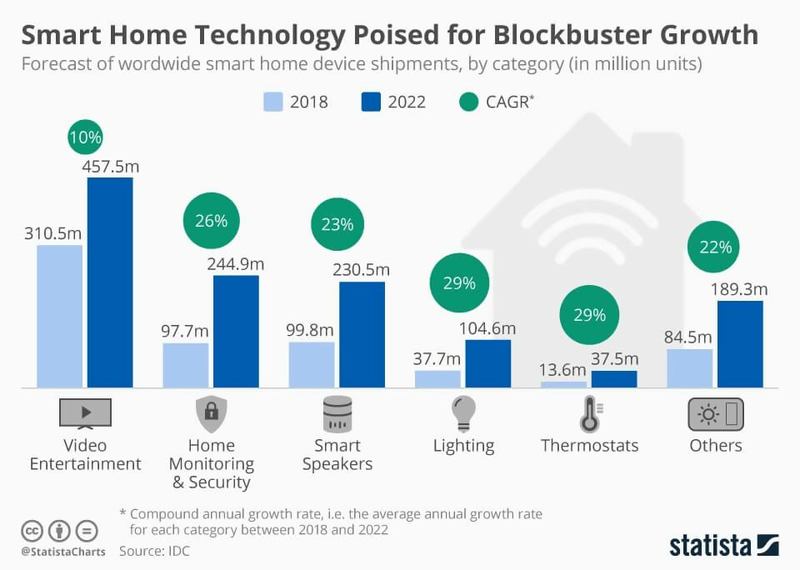How Smart Homes Become Source of Malicious Cyber Attacks


- IoT devices susceptible to online threats
- Smart homes are not secure
- Built-in security vulnerabilities
- Final words
A smart home, highly automated and packed with connected devices, is not something futuristic anymore. There’s a growing number of such houses at the moment, mostly in large cities across North America. But their presence has spread out to the entire world.
Many people associate a smart home with Amazon Echo or Google Home. These devices can tell you the weather report or answer increasingly tough questions. However, that’s just the tip of the iceberg.
The real purpose of such tools is to control devices like smart routers, power plugs, light bulbs, thermostats, security cameras, and other appliances.
Smart homes are just as promising as they are frightening. That’s because the devices are ill-equipped to withstand cyberattacks, and they are connected to the internet 24/7.
They have access to the outside world through your Alexa or Google Voice assistant software. Thus, they are part of a worldwide Internet of Things (IoT) network, which is quite a vulnerable ecosystem as of now.
Earlier in 2019, cybersecurity researchers reported a botnet attack that involved 402,000 different IP addresses. They were mostly unsecured devices such as webcams and IoT routers, and hackers were using them to launch DDoS attacks.
They hacked into these devices because the owners had weak passwords. Then, the cybercriminals used them to launch DDoS attacks against organizations.
IoT Devices as Malicious Agents
Having a smart TV set and door lock with an attached security camera is both useful and convenient. And a connected smart thermostat allows you to turn on the heating system even before you head home.
The key term here is “connected.” Every device that has internet access is susceptible to an attack, which could lead to third parties taking over it. A smart bulb or even security camera, do not have much computing power. You cannot use a smart thermostat to solve complex problems.
Nonetheless, the combined computing power of networks of IoT devices is enormous and, most importantly, a single network connects them. Once someone penetrates your home/office network, he’ll be able to link these smart devices to a broader grid, which in turn can be part of a global network.
That is how massive Distributed Denial of Service, or DDoS, attacks come to reality. Someone connects several IoT devices and uses them to send thousands of requests for service. The website cannot respond to such a massive number of demands and crashes.
The process is quite simple and does not require advanced hacking skills. All it needs is a bunch of smart devices, which are sadly far from secure.
A Smart Home Is Not a Secure Home
Smart home security systems may offer excellent protection, but they are vulnerable to online attacks and hacks. Loopholes allow hackers to infiltrate cameras, especially those that are controlled by centralized hubs from Amazon, Google, and Apple.
Look, physically breaking your door is not the only method to enter your home. If you hack the security cam and the connected smart lock, you are free to access any room.
Furthermore, some companies share security webcam data with third parties, which makes it insecure. That’s because someone could hack the video during transmission or compromise the data storage of the recipient.
The same applies to the app on your smartphone, which you use to remotely control your smart front door lock or other home devices.
Streaming live video from your home webcams does not add a layer of security in case of an advanced cyberattack. An attacker only needs 24 hours of video footage after he hacks your camera to stream a pre-recorded video of your room.
The Problem with Built-in Security Holes
There is also the problem of smart devices that have weak protection and a small chance of recovery.
There’s a new vulnerability called Simjacker that hacks mobile phones by sending a malicious SMS. The text contains spyware that orders your SIM card to take control of your device. Rough estimates show that this attack has affected over one billion smartphones.
Furthermore, you cannot fix the issue by updating your software.
Once it hacks your phone, this malware will have access to all your data, as well as every device you control through your mobile. That means it can take over your smart home.
Such vulnerabilities exist not only in mobile phones but in IoT services like routers, cams, and sensors. These devices use outdated communication protocols and firmware that are open to attacks. Some of these program manufacturers are out of business, which means you can’t patch these devices at all.
I’m not talking about backdoors so that government agencies can access your device. I mean vulnerabilities occurring due to faulty software design, old protocols, and unprotected operating systems.
The problem is getting even more complicated as manufacturers continue to release IoT devices that are not adequately tested. That’s because the competition is fierce in this domain, and everyone wants to have the biggest market share.


Concluding Words
Your smart home is not the fortress you think it is. The top-of-the-line devices are an easy target for hackers who can invade your privacy or infiltrate your house.
Undoubtedly, a smart sensor detecting smoke, gas, or water leaks provides another layer of security. But these IoT devices don’t have the most robust security systems, which puts them at risk of potential attacks. And the results can be catastrophic for your smart home and yourself.



